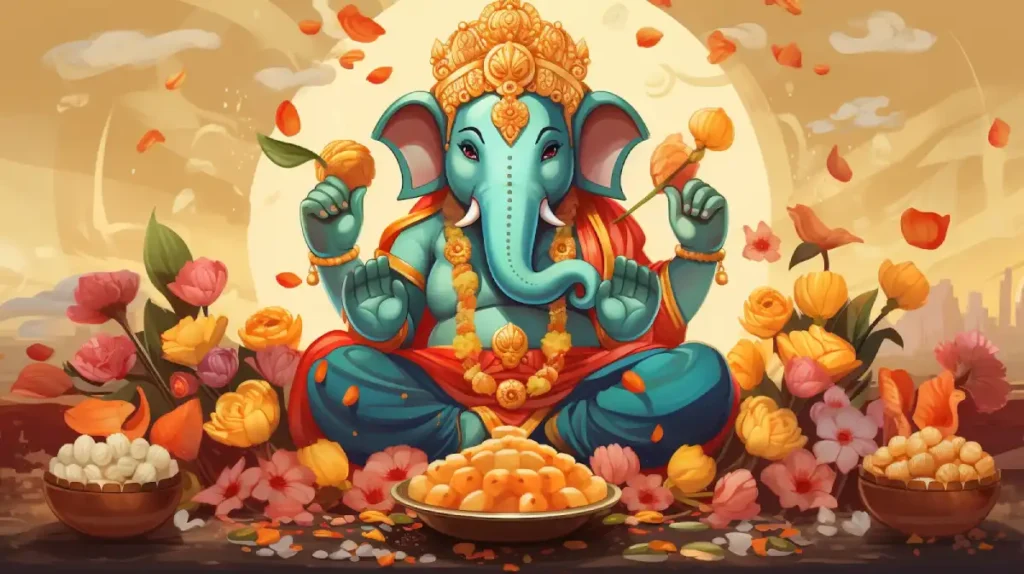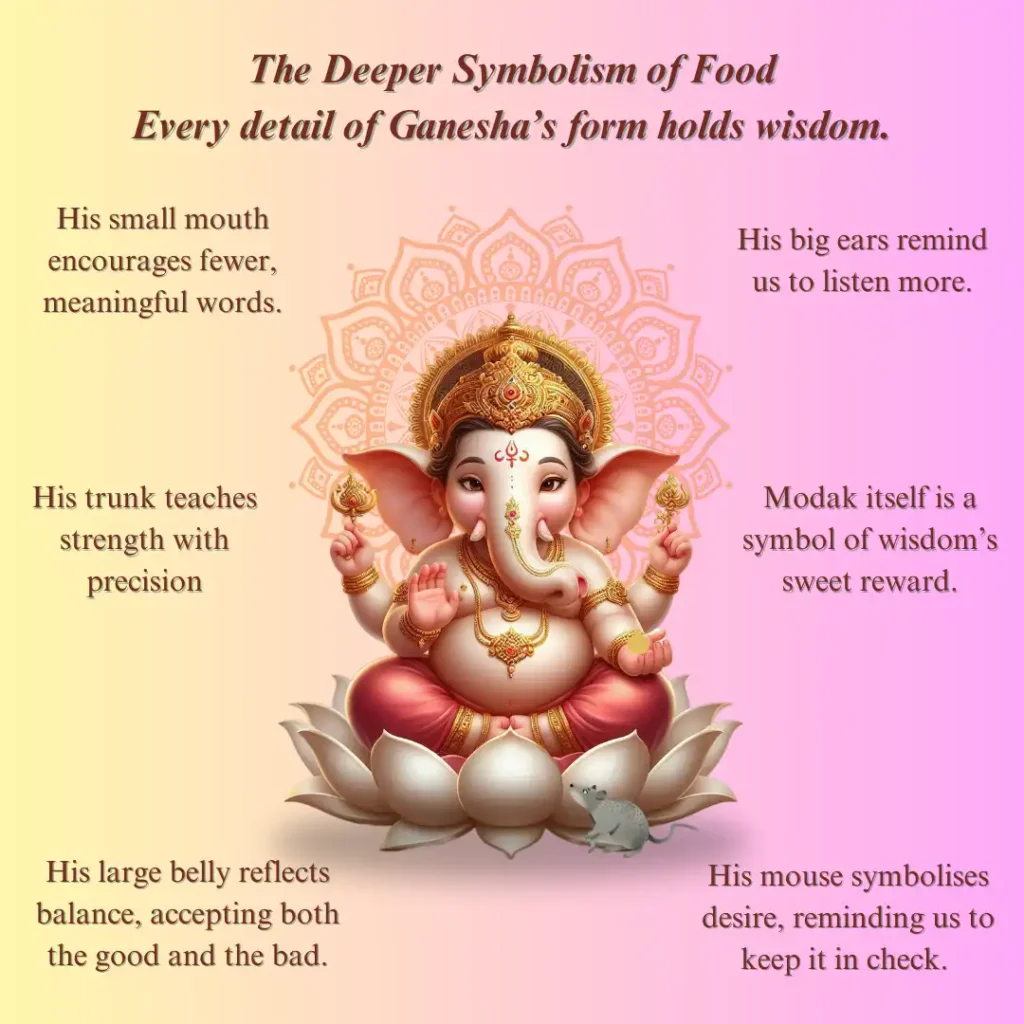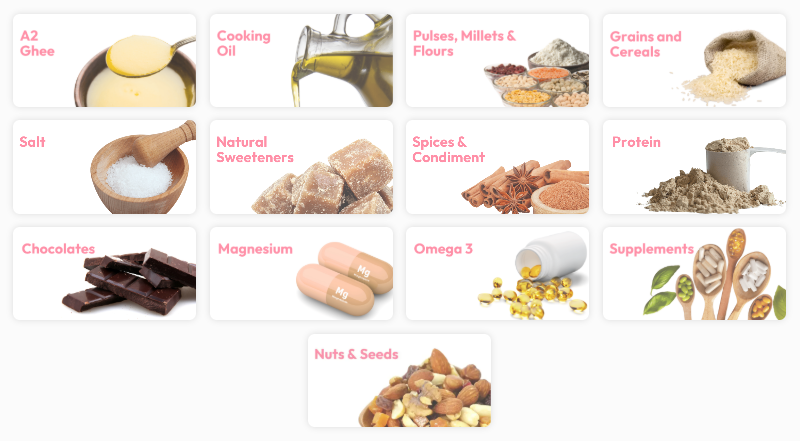Ganesh Chaturthi: 5 Powerful Healing Secrets of Prasad

Table of Contents
Introduction
Ganesh Chaturthi isn’t just a festival; it’s a heartfelt celebration of devotion, family, and the cherished traditions that have been lovingly passed down through generations. Every home fills with fragrance of incense, steaming modaks, and fresh flowers and with it comes a sense of peace that feels both grounding and joyful.
When you think about it, every dish that fills our kitchens during this time carries a story, a purpose, and wisdom that our grandmothers seemed to understand intuitively. The prasad we prepare is more than just delicious; it’s a thoughtful expression of care and connection to our roots, nourishing not just our bodies, but our minds and spirits too.
As we gather to offer our love and gratitude to Lord Ganesha this year, let’s take a moment to reflect on the deeper meanings behind the foods we present. Each dish is a testament to how these traditional recipes continue to nurture us today, blending taste, health, and devotion into one sacred act.
Panchamrut : 5 Simple Ingredients, 1 Powerful Blend
Every puja begins with Panchamrut, a sacred combination of five ingredients that symbolize purity, nourishment, and balance. Simple yet profound, this elixir has been a part of Hindu rituals for centuries—and not just for its ritualistic value but also its health benefits.
The 5 Elements of Panchamrut
At first glance, Panchamrut seems simple; a blend of milk, curd, ghee, honey, and sugar. But each ingredient represents one of nature’s fundamental elements and serves a higher purpose in balancing the body, mind, and spirit. Together, they form a nectar that embodies the philosophy of “simple living, conscious nourishment.”
Milk – The Symbol of Purity and Nourishment
Milk is often called a satvik food in Ayurveda, a substance that brings calmness, purity, and clarity to the mind. It represents the element of water, flowing with cooling energy that soothes and rejuvenates.
Nutritionally, milk is rich in protein, calcium, and vitamin B12, all essential for strong bones, healthy nerves, and sustained energy. Spiritually, it signifies maternal nourishment, the same selfless giving that defines our devotion during Ganesh Chaturthi.
When we offer milk to the deity or consume it as part of Panchamrut, it’s a symbolic act of cleansing and renewal washing away fatigue and inviting peace.
“As pure as milk” is more than a saying; it’s a reminder that purity in thoughts and food keeps us spiritually centered.
Curd (Yogurt) – The Probiotic Powerhouse
Curd represents transformation, it’s milk reborn through the action of good bacteria. In Ayurveda, curd is considered grounding and beneficial for the element of earth, supporting digestion, gut health, and emotional stability.
It’s loaded with probiotics, which help maintain a healthy gut microbiome, enhance nutrient absorption, and strengthen immunity. For centuries, curd has been valued not just for its taste, but as a natural aid against acidity, fatigue, and seasonal imbalances.
Emotionally, curd brings a sense of calm and contentment, it steadies both the stomach and the mind. When included in Panchamrut, it reminds us that growth often requires transformation, and balance comes through adaptation.
Ghee – The Golden Essence of Strength and Longevity
If there’s one ingredient Ayurveda calls liquid gold, it’s ghee. Representing the element of fire, ghee embodies transformation, strength, and purification. It’s believed to nourish all seven dhatus (tissues) of the body from plasma to reproductive cells ensuring longevity and resilience.
Ghee acts as a carrier of nutrition, helping transport the benefits of milk, curd, and honey deep into body tissues. It lubricates joints, supports hormones, improves memory, and enhances metabolism.
In rituals, ghee is also used in lamps symbolizing the light of wisdom that dispels darkness. Likewise, consuming ghee in Panchamrut symbolizes feeding that inner flame of vitality and consciousness.
When we include ghee in our offering, we invoke clarity, courage, and strength—qualities Lord Ganesha embodies.
Honey – Nature’s Elixir of Balance
Honey, or madhu, is one of nature’s most fascinating substances collected by bees, infused with sunlight, and brimming with life force. It represents the element of air, symbolizing adaptability and flow.
Ayurveda describes honey as yogavahi, a catalyst that amplifies the properties of any ingredient it combines with. It harmonizes the Panchamrut blend, binding all the diverse tastes into one smooth, sweet balance.
Rich in enzymes, antioxidants, and natural antibacterial properties, honey soothes the throat, boosts energy, and helps regulate metabolism. Spiritually, it embodies the sweetness of life, the ability to stay calm and kind even amidst challenges.
In Panchamrut, honey reminds us that sweetness, when shared with gratitude, multiplies joy.
Sugar – The Spark of Energy and Joy
Sugar, though simple, represents the element of space (ether); the vastness that allows all other elements to coexist in harmony. It provides instant glucose, revitalizing the mind and body, especially after long fasting or rituals.
In Ayurveda, a small amount of sweetness is said to stabilize mood and promote happiness. It activates serotonin release, bringing a gentle sense of satisfaction and calm.
Symbolically, sugar reminds us that even the smallest act like a spoon of sweetness can bring joy when offered with pure intention. It completes the Panchamrut blend by adding energy and positivity, reminding us that balance includes both nourishment and delight.
The sweetness of sugar is more than flavor; it’s a metaphor for joy shared, not hoarded, a perfect reflection of the festive spirit of Ganesh Chaturthi.
Each element represents a unique property, but together they create an ayurvedic synergy, a blend that rejuvenates and restores balance.
The Healing Harmony
~ Milk and curd work hand-in-hand to balance gut bacteria and cool the system.
~ Ghee serves as a carrier, driving nutrients deep into body tissues.
~ Honey harmonizes the blend, bringing vitality and a mild antiseptic touch.
~ Sugar provides the instant energy that fuels prayers and festivities.
This magical mixture; Amrut, or nectar is believed to strengthen both body and spirit. During the ten days of Ganesh Chaturthi, it acts as a gentle tonic against fatigue, colds, and digestive disturbances.
Modern science echoes this wisdom: probiotics in curd improve immunity, honey has antibacterial properties, and ghee provides healthy fats vital for cell health. Together, Panchamrut becomes a holistic offering symbolizing unity, balance, and nourishment.
Even today, serving Panchamrut reminds us to embrace moderation and mindfulness valuing quality over excess.
Modak : A Sweet Lesson in Tradition
No Ganesh Chaturthi is complete without Modak, the sweet Ganesha himself is said to adore. The very name brings a smile, it’s a reminder of childhood, devotion, and the joy of sharing. But beneath its sweet exterior lies a wealth of wisdom.
The Symbolism of Modak
Lord Ganesha, known as Modakpriya, symbolizes intellect and prosperity. Offering him modak signifies offering knowledge, humility, and sweetness in every thought and action. The round modak, shaped like a teardrop, represents wholeness; the union of mind, body, and soul.
The Nutrition Within
Traditionally, modaks are either fried or steamed, but the steamed version (ukadiche modak) stands out for its healthfulness. The outer rice flour shell is light and gluten-free, while the filling inside, coconut and jaggery is a treasure trove of nutrients.
~ Coconut provides healthy fats, fibre, and minerals like manganese.
~ Jaggery adds natural sweetness along with iron and antioxidants.
Together, they create a balanced treat that energizes without overwhelming digestion.
Modern Twists with Ancient Roots
Today, households experiment with fillings of nuts, seeds, sesame, or even dark chocolate. Each version adds a unique nutritional touch; omega-3s from seeds, magnesium from nuts, antioxidants from cocoa, yet the heart of modak remains unchanged: prasad should uplift, not burden.
In Ayurveda, sweets eaten in moderation and with gratitude are said to calm the mind and improve mood. So when we savour a modak after offering it to Ganesha, we’re not just enjoying dessert, we’re absorbing centuries of mindful eating wisdom.
Regional Delicacies: One Festival, Many Flavours
Ganesh Chaturthi’s charm lies in its diversity. Though celebrated differently across India, the devotion remains the same. Each region expresses its love for Ganesha through unique delicacies rooted in local ingredients and seasonal wisdom.
Across India’s Kitchens
Maharashtra: The heartland of Ganeshotsav celebrates with ukadiche modak and Panchamrut.
South India: Steamed rice dumplings called kozhukattai and creamy payasam symbolize purity and abundance.
Goa and Karnataka: Patoli sweet rice rolls steamed in turmeric leaves, carry the earthy aroma of monsoon fields.
Gujarat: Laddus and puran poli sweeten the air with their ghee-rich aroma.
Each dish embodies the same core principle sattva, or purity. Whether it’s the cooling payasam of Tamil Nadu or the aromatic modak of Maharashtra, these offerings celebrate balance, simplicity, and gratitude.
The Common Thread
Though flavours differ, their essence is one: to honour the earth’s abundance and nourish the community. These foods aren’t just meant to please the palate; they’re meant to realign our rhythm with nature seasonal ingredients, gentle preparation, and heartfelt intention.
When we prepare these traditional dishes today, we keep alive the collective memory of our ancestors; a reminder that culture and health have always gone hand in hand.
Every region adds its own flavour, but each dish is rooted in simplicity and reverence.

These symbols remind us that clarity, balance, and truth should guide every choice we make, including what we eat. When we choose wholesome, clean ingredients for our prasad, we are honouring both tradition and our wellbeing.
Conscious Choices with Pink Tiger
In today’s world of packaged foods and flashy claims, it’s easy to lose sight of purity, the very essence of prasad. That’s where Pink Tiger Verification comes in, helping us make informed, conscious choices.
Much like Lord Ganesha’s trunk, which symbolizes discernment, the ability to choose wisely; Pink Tiger empowers us to separate the genuine from the misleading.
What Pink Tiger Stands For
✅ Label Accuracy Verified – ensuring what’s promised is truly delivered.
❌ No Added Sugar or Artificial Colors – so what you eat is pure and honest.
❌ No Excess Heavy Metals or Toxins – keeping every bite safe and clean.
From natural jaggery to unpolished flours and cold-pressed oils, Pink Tiger-approved products ensure that the prasad you prepare remains authentic and wholesome.
Imagine preparing modak with organic jaggery instead of refined sugar, or Panchamrut with pure ghee instead of adulterated ones. The difference isn’t just in taste, it’s in energy, purity, and peace of mind.
By bringing science-backed verification to our traditions, Pink Tiger bridges the ancient and the modern, helping us preserve rituals without compromising on safety and trust.

Celebrating with Intention
As Ganesh Chaturthi approaches, the excitement fills every home, but amid the festivities, it’s worth pausing to reflect on how we celebrate. True devotion isn’t in abundance; it’s in awareness.
This year, let’s make small but meaningful shifts:
~ Replace refined sugar with jaggery or coconut sugar.
~ Choose millet or rice flour instead of refined maida.
~ Steam your modaks instead of frying.
~ Opt for ghee over processed oils.
~ Prepare Panchamrut fresh daily, using clean, trusted ingredients.
Each mindful act turns a simple ritual into a conscious celebration. When we choose purity in our offerings, we also invite purity into our lives.
The Spiritual Essence
In Hindu philosophy, food is seen as prana; life force. Offering pure food is offering pure energy.
As we chant “Ganpati Bappa Morya,” we align our body, mind, and spirit with gratitude and abundance.
In that moment, every bite of prasad becomes sacred, uniting nourishment with devotion, taste with truth.
Conclusion
Ganesh Chaturthi reminds us that devotion isn’t just in rituals; it’s in choices. From Panchamrut’s nourishing blend to the humble modak’s message of joy, every offering tells a story of balance, purity, and love.
As you prepare prasad this year, remember that the true sweetness lies not just in taste, but in the intention behind it. When tradition meets consciousness, every bite becomes a blessing, for our bodies, our homes, and the generations yet to come.
✨ May this Ganesh Chaturthi bless every home with wisdom, purity, and sweetness. Ganpati Bappa Morya! 🪔
See More on Instagram: Ganesh Chaturthi Special
Join our WhatsApp community to discover new verified products and get exclusive updates. Click here to join
Frequently Asked Questions (FAQs)
1. Why is Panchamrut considered so sacred during Ganesh Chaturthi?
Panchamrut is more than a ritual offering, it’s a sacred blend symbolizing balance, purity, and vitality. Made of milk, curd, ghee, honey, and sugar, it represents the five elements of nature working in harmony. Milk cools, curd nurtures the gut, ghee strengthens, honey heals, and sugar energizes. Known in Ayurveda as Amrit, this elixir supports digestion, boosts immunity, and restores balance reminding us that true nourishment lies in simplicity and unity.
2. Is eating modak healthy?
Modak, when made the traditional way, is a perfect example of mindful indulgence sweet yet nourishing. The steamed version (ukadiche modak) uses rice flour, making it gluten-free, light, and easy to digest. Inside, a filling of grated coconut and jaggery offers a natural mix of minerals, healthy fats, and antioxidants. Coconut supports brain function and sustained energy, while jaggery adds iron and micronutrients that aid metabolism and blood health. Steaming preserves nutrients and keeps the texture soft, ensuring balance between taste and wellbeing. In moderation, one or two modaks a day are not just permissible, they’re beneficial. Prepared with clean, natural ingredients, modak becomes more than a festive treat it’s a reminder that pleasure and health can beautifully coexist.
3. Can modern ingredients like dark chocolate or nuts be used in prasad?
Yes, adding modern, nutrient-rich ingredients to traditional prasad beautifully keeps customs relevant while boosting nutrition. The essence of prasad lies in purity and intention, not rigidity. Ingredients like dark chocolate, nuts, seeds, and dry fruits bring antioxidants, healthy fats, and plant proteins that support heart, brain, and energy health. For example, dark chocolate lifts mood, while almonds and flaxseeds aid hormonal balance. When blended with coconut and jaggery, these additions unite tradition with modern nutrition. The key is balance and devotion ensuring prasad stays wholesome, heartfelt, and meaningful for generations to come.
4. How does Pink Tiger Verification ensure clean offerings?
Pink Tiger Verification bridges trust and transparency, ensuring the ingredients used in sacred offerings are genuinely clean and safe. Each verified product is tested for heavy metals, pesticide residues, added sugars, and label accuracy, so what you see is what you truly get. In a market full of misleading claims, Pink Tiger helps identify products that meet verified purity standards. Choosing Pink Tiger-verified ghee, jaggery, or cold-pressed oil means every ingredient in your prasad reflects mindful devotion and honesty.
5. What is the spiritual meaning behind offering food to Lord Ganesha?
Offering food, or naivedya, to Lord Ganesha symbolizes gratitude for nature’s abundance and the acknowledgment that all nourishment is divine. In Hindu philosophy, food is considered prasad a sacred gift that purifies both giver and receiver. When we prepare it with love and mindfulness, the act itself becomes a meditation, aligning our senses with humility and devotion.